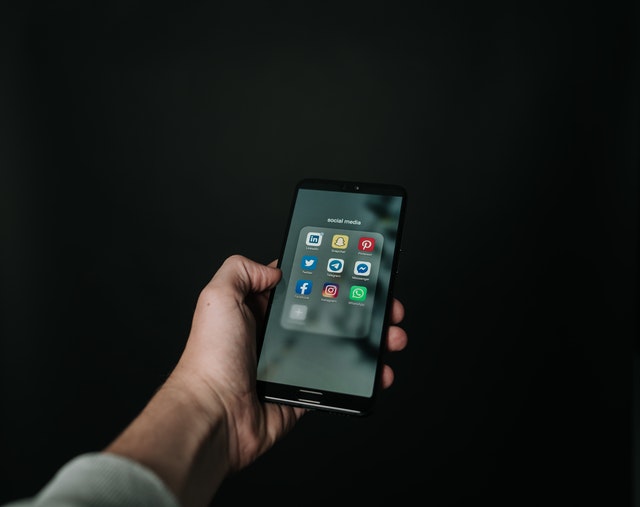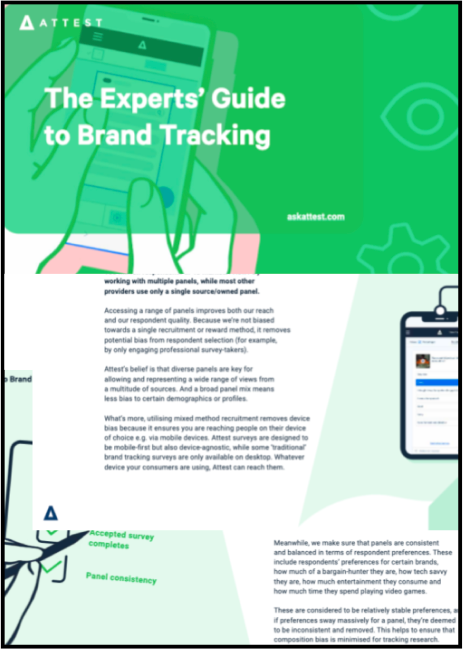Social listening is a terrible way to measure your brand

If you're using social listening to measure your brand, you're doing it wrong. Not only can you not see the vast majority of social data, but the data you can see isn't as useful as it's made out to be. Here's why social listening is no good for brand tracking, and what to do instead.
You might not have noticed, but the lights just went out.
Not at the flick of a switch. More like the gradual dimming over a period of a couple of years.
Social media listening and monitoring used to shine a bright light on brands and consumers’ conversations about them – but now we’re left in the dark.
Why?
Social listening can’t reach dark social
Over the last few years, with the rise of Whatsapp, Snapchat and other one-on-one or small group messaging services (not to mention the resurgence of email), ‘dark social’ has stolen the limelight from social media data.
So much so, that the majority of conversations now take place away from the original ‘Big 3’ social networks of Facebook, Twitter, and LinkedIn. And consumer behaviour has changed too, with around 84% of sharing activity now coming from dark social.
In 2020, Whatsapp alone has 1.5 billion active users across 180 countries, sending billions of messages every single day.
Yet you can’t track any of those conversations with traditional social media listening tools.
Brandwatch doesn’t track dark social traffic.
Brandwatch
The reality is that dark social, email, and offline are where the majority of consumer discussions about your brand actually happen. If you’re only focusing on the traditional ‘Big 3’ social networks, you’re quite literally in the dark about what’s actually being said.
You might be wondering: ‘If dark social is such an issue, then why do marketers still rely on social listening data to measure their brand?’ Great question! The truth is, the vast majority of marketers are unaware of the impact dark social has on their data. A survey of over 1,200 brand marketers showed that only 4% of them listed the growing prevalence of dark social in their top three biggest challenges.
And dark social is only part of the problem.
Nobody really knows what the hell to do about it [dark social].
eConsultancy
Why social listening is a terrible way to measure your brand:
So we know that social media listening tools – and the brands that have depended upon them – can only listen in on a small sliver of what people are really talking about. But what about the stuff they do manage to listen in on? The truth is that even the data these tools can pick up is a less-than-optimal measure of what consumers think of your brand.
Social media data is highly curated
Generally, when consumers are on social media, they’re only putting out a highly curated (read: inaccurate) picture of themselves.
Consider the behaviour you observe with your own friends and colleagues. Do you think their social feeds represent every aspect of their lives? Do you think they talk about the same things on their public profiles that they do in a private, one-on-one conversation?
Studies back up the idea that we’re not always wholly truthful online. For example, a survey of 5,000 students conducted by Digital Awareness UK found that 60% of them believed their friends show a “fake version” of themselves on social media.
Gen Z and Millennials, in particular, are prone to curating their online image in an effort to be perceived as the best possible version of themselves. But it’s not only societal demands that cause them to filter what they share – today’s young people have wised up to the deal they make with social media platforms like Facebook and Instagram. They know their data is sold and mined by brands, and that it’s publicly available to view. With that in mind, they’re prone to curate the information they share.
Their real views and conversations appear more often in their personal one-on-one messaging apps, like Whatsapp.
How are brands and social media listening tools responding? Well, they’re not.
Consumers are savvier than we give them credit for
With increased knowledge about how our online data is used comes an increased will to hide it. Consumers are increasingly savvy, and many are savvy enough to block what they don’t want certain brands (or the government) to see and monitor.
This is especially true for older generations. While Gen Z and Millennials are more likely to see the benefits in companies using their data for personalisation, Gen X and Boomers are more likely to find it creepy.
Tools that are designed to make online activity more private have seen a boom in popularity – from entirely private browsers, like Tor, to VPN services.
Social data is biased
Think back to the last time you mentioned a brand on social media. Was it to give an in-depth critique of a product or service, with Net promoter scores (NPS) attached, and a run-down of all the ways they could improve? The answer is probably no.
Brand mentions on major social networks are often incredibly positive or super negative because the people getting involved want to praise or disparage the brand in question (no judgment, we’ve all been on a Twitter rant). The middle-ground becomes a sort of grey area, and the extremes become overly emphasised.
The people who praise or air their grievances with brands on social media tend to have a strong point of view. They’re not the silent majority that makes up the bulk of your revenue – and therefore definitely not the only signals you want to base business decisions on.
This is why social media listening and monitoring is a terrible way to measure brand.
It provides you with only a tiny fraction of the conversations taking place about your brand, from a very small, biased sample of consumers.
It can’t give you a true, accurate picture of your brand’s strengths or weaknesses, general awareness, consumer sentiment, or how it is trending. And for all the same reasons, it won’t provide you with accurate competitor intelligence.
What’s the solution?
Social listening isn’t all bad! The problem is that it doesn’t give you an accurate snapshot of your brand health in isolation. Having a diverse range of methodologies and tools at the ready will always give you a more nuanced, more accurate view of what you can do to move the needle for your brand.
The good news is, that it’s possible to accurately measure your key brand health metrics, learn your competitor’s strengths and weaknesses, understand shifting market dynamics, and see patterns in consumer trends in one place. Tracking brand health is nowhere near as hard as it used to be.
Want to get started with brand tracking, monitor your brand’s health, and understand what consumers are really saying about you? Download your copy of our guide to bringing brand tracking in-house and start getting the data that will revolutionise your growth strategy, without an expensive research agency:
Tell us what you think of this article by leaving a comment on LinkedIn.
Or share it on:


